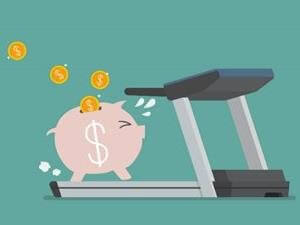Saving Strategy: Financial Fasting

Fad diets aren’t just for weight loss—saving strategies follow trends, too. In this article, we’ll take a look at financial fasts.
At least in theory, this strategy is simple: use none of your disposable income for a pre-determined span of time. Much like drastically cutting calories, saving 100 percent of your extra income might sound downright impossible. But, a solid game plan makes a spending freeze easier than you might imagine.
One bite at a time
As the old adage goes, “eating an elephant” happens one bite at a time. Likewise, a task as seemingly impossible as a financial fast becomes a lot easier when it’s broken into smaller “bites.” If the thought of a week- or month-long freeze is too overwhelming, start with a one-day goal. If even that seems difficult, it’s time to take a good, hard look at your spending habits.
Like a lot of Americans, you might be eating your extra income—literally. (Did you know that the average household spends about $3,000 on dining out each year?) If you find that you’re spending too much on food, break down your budget by meal. For instance, commit to making coffee at home and brown bagging your lunch for just a day. If this is a habit that’s gotten out of hand, correcting this behavior for just one week could give you an extra $100! Once you’ve mastered a one-week “cleanse,” you can apply those same skills to a month-long freeze. You could even try, “no-spend November,” a popular saving technique for the holidays. Just imagine how much you’ll have in the reserves by Black Friday.
Bottom line
They might not be for everyone, but financial fasts are growing increasingly popular. Give one a try and let us know how it works out!